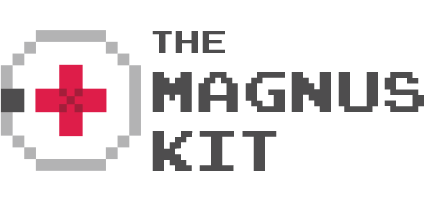A Return to Form: The Cyclical Nature of Gaming
People often say that culture is cyclical, meaning that what was popular a number of years ago comes back around as time goes on. I didn’t start to notice this until somewhat recently, but then again I’ve not been around long enough to really see this cycle complete one full rotation. One of the few areas that I’ve invested any amount of time to learn the history of is gaming, so maybe that’s why it’s place where I’m seeing this phenomenon first. Gaming, in the modern sense, has only been around since 1972 and most gamers today probably don’t really start counting until the NES exploded onto the scene in 1985. Maybe that’s why it’s easier to see the old styles coming back around the bend.
Nowhere is this trend clearer than in the First Person Shooter Genre. As of the past three years, we’ve seen a return to the old fashioned run-and-gun style that made the genre was it is today. Moreover, the same titles that fashioned the genre are the ones taking us on a trip down memory lane: titles like DOOM and Wolfenstein.
Doom, as I’ve said before, damn near invented the FPS as we know it. Doom was so popular and influential that the whole FPS genre didn’t undergo any real change until Half-Life, five years later. DOOM (2016) takes what we thought a shooter was supposed to be and blows its head off. When your character is confronted with the usual narrative exposition dump, he pushes the monitor away in disgust; he’s got things to rip’n’tear. Gone are the pretentions to realism and regenerating health; your character gets ammo from destroying monsters in gruesome horrific ways and health kits are instantly applied as your character walks over them.
Wolfenstein: The New Order combines the old fashioned shooty gameplay with more modern touches, like some semblance of a story. While it returns to its roots, Wolfenstein: TNO also takes time to deconstruct the very tropes that it created. Yes, you play as William Joseph “B.J.” Blazkowicz, but instead of glorifying in his bloody rampages through Nazis, you take time to reflect on how tired and broken he is; you see what makes him strong and what makes him silent. The merge of new and old gives players poignant story moments and adrenaline filled missions, the best of both worlds, really.
This is not to say that the renaissance of early 90’s style is limited to the FPS of the world. RPGs are heading back to their roots as well. The classic RPG is sprawling and mysterious, like The Elder Scrolls II: Daggerfall or Fallout and though the graphics have certainly gotten a facelift, games like Divinity: Original Sin and Wasteland 2 aim to bring back that unforgiving magic many gamers grew up on.
Divinity: Original Sin, released in 2014, saw all of the hand holding that modern RPGs do and decided that, no thank you, it would rather chop off its own leg than leave you a map to their next objective. The kind of game where you can build a useless character and not realize it until halfway through the main story, it will vomit mountains of text at you and expect you to remember the details. Divinity: Original Sin cleverly stops short of the truly classic RPG chore of taking actual notes as you play, but it’s a near thing. Combat is turned based and based on action points and there’s enough side quests for you to faff about forever. If you’re looking to get truly lost in an RPG world, you no longer have to play a game with graphics like the stuff you scrape off your boots.
Wasteland 2 had one hell of gestation process. The original Fallout, a spiritual successor to the original Wasteland, was arguably intended to be Wasteland 2, but we had to wait 26 years for a true sequel. Wasteland picks up where the original left off, dumping you off at the ass end of nowhere. Comparing Wasteland 2’s atomic desert to Fallout’s is like comparing a gecko to a komodo dragon. If you hope to journey around the desert alone, better think again. Every door is trapped, every room is full of enemies, and I don’t think you’re too hot at disarming traps or lockpicking, are you buddy? You need to bring along a group of friends, but don’t feel bad if one or two of them bite the dust out there. A huge number of recruit-able characters can round out your squad. When you don’t have to give all your characters voiced lines, the possibilities are endless.
I don’t know how long this nostalgia ride will go on, but I’m happy to ride it until it runs out of gas. Old games certainly aren’t perfect, and modern games have brought a huge amount of progress to the fore, not just in terms of visuals, but with new mechanics and design choices. Sometimes though, you miss a main character that moves at 40 MPH and guns that clear a room without reloading, or sorting through an in-game journal to figure out where you should be going. I’ll just hold out for a classic-RPG inspired Elder Scrolls sequel here in the corner.
By sharing this piece with everybody you know, you’ll earn a place on my “Awesome people of the millennium” list.
For more waffling about current, past, or nonexistent trends in gaming, don’t forgot to follow TheMagnusKit on Facebook and Twitter.


















